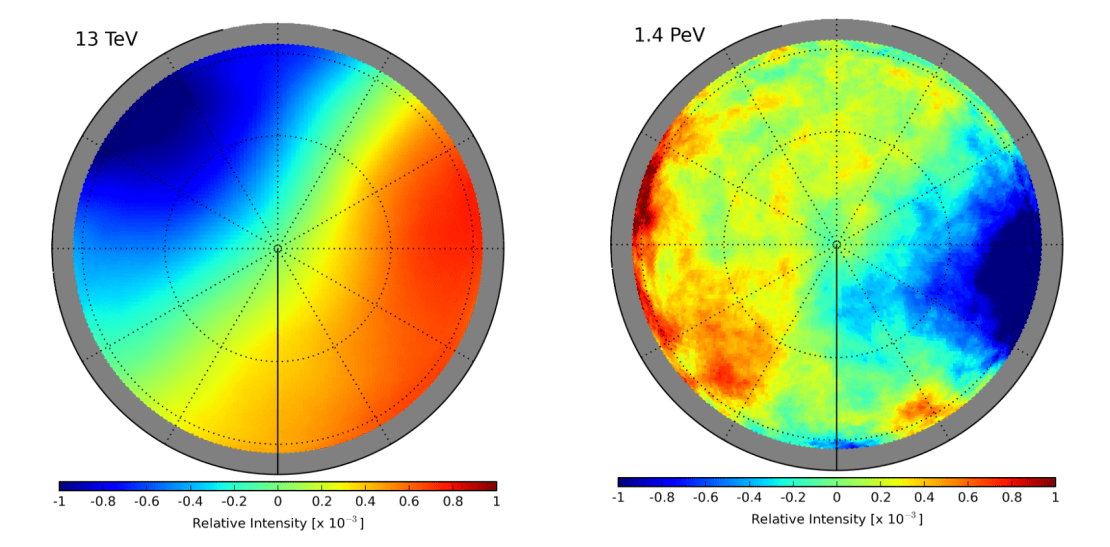IceCube and IceTop were the first detectors to map the cosmic ray anisotropy in the Southern Hemisphere. The patterns observed by IceCube in the distribution of the arrival directions of cosmic rays were found to be similar to those mapped by several detectors in the Northern Hemisphere.
The IceCube Collaboration is now updating these results using 318 billion cosmic-ray-induced muon events detected in IceCube between May 2009 and May 2015. The larger data sample allowed discerning new regions in the anisotropy maps, which shed some light on the physical processes that stir up the variations in the arrival direction of cosmic rays. Researchers also looked for energy- and time-dependent changes in the anisotropy maps, confirming the strong dependence with energy. No time-dependent variation has been observed, in agreement with current theoretical models. These results have been recently submitted to The Astrophysical Journal.

Cosmic rays created in our galaxy, with energies from tens of GeV up to a few EeV, propagate through the interstellar medium, diffusing into an isotropic flux when reaching the Earth. Nonetheless, following our models, we expect a dipole anisotropy at the per-mille amplitude or lower that was indeed observed by cosmic-ray observatories in the Northern Hemisphere at TeV energies and later confirmed by IceCube in the Southern Hemisphere.
However, a smaller scale anisotropy was also observed, which at TeV energies could be explained by the interactions of cosmic rays with an isotropically turbulent interstellar magnetic field. The perturbations in the arrival direction distribution of cosmic rays due to magnetic instabilities can produce localized regions of excess or deficit at the 10-4 level, which are not expected to vary in time. The new IceCube anisotropy maps, using the last six years of data, do not show any time dependence and agree with these expectations.
With the increased data sample, IceCube reveals two new regions in the anisotropy maps, both at high significance and, again, with no time dependence of the small-structure.
As had been observed before, the global anisotropy shows a strong dependence in energy and phase at lower energies, with a large excess in the sky from 30˚ to 120˚ and a deficit from 150˚ to 250˚ that disappear gradually. Above 100 TeV, anisotropy maps show a deficit from 30˚ to 120˚, which increases with energy at least up to 5 PeV. The origin of this transition is not yet fully understood, but it could be explained by a change of the dominant sources from the Orion arm to the direction of the Galactic center.
“We have also found differences in the amplitude of the anisotropy between IceTop and IceCube that could be explained by a different chemical composition of the cosmic ray sample measured by both detectors,” explains Frank McNally, an IceCube researcher who graduated from the University of Wisconsin–Madison with a thesis on this topic. Further analyses will allow us to confirm this scenario.
Info “Anisotropy in Cosmic-Ray Arrival Directions in the Southern Hemisphere with Six Years of Data from the IceCube Detector,” The IceCube Collaboration: M.G.Aartsen et al, The Astrophysical Journal 826 (2016) 2, iopscience.iop.org arxiv.org/abs/1603.01227